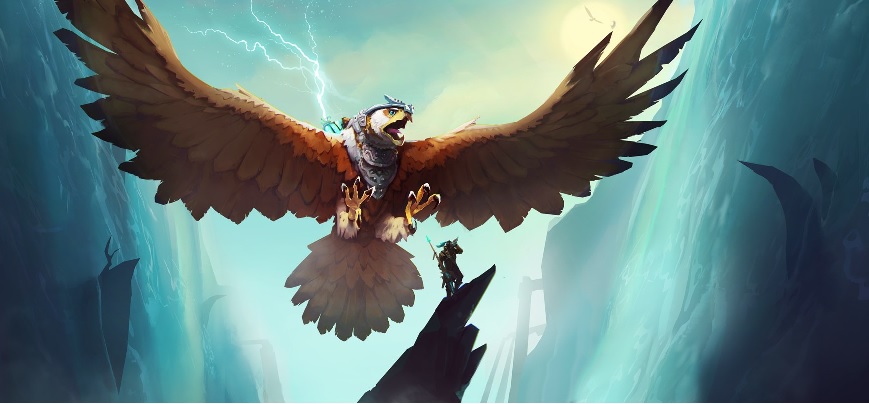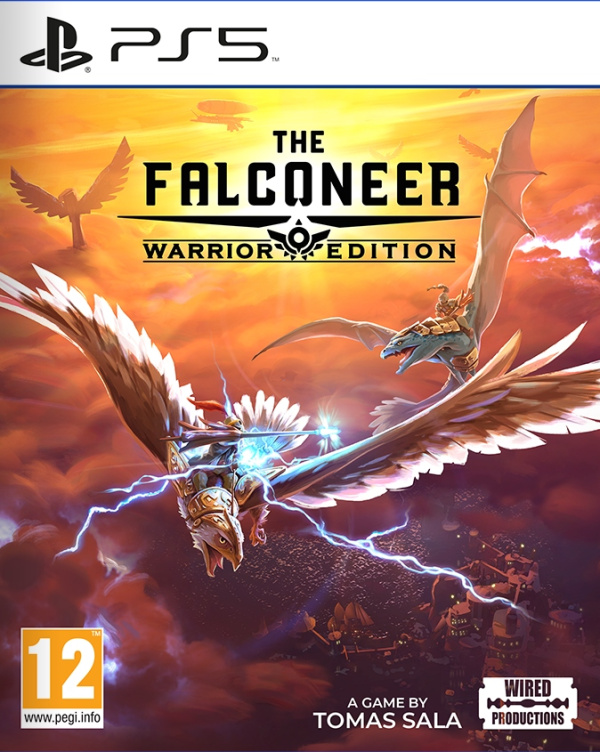

I spoke about the strong art earlier, but what also helps the graphics stand out is the rather unusual rendering techniques that solo developer Tomas Sala has leveraged. It helps that the setting is brought to life by some rather striking visuals. The look ends up being rather unusual, but really immersive and bold, immersing you in the rich world, and adding more substance to it along the way to boot." "Unlike almost every other game, no 3D model in this game uses texture mapping of any sort, which means that the objects you see gain their form and look entirely from the in-game lighting. It’s an extremely rich setting, and The Falconeer uses it to paint a picture of a world perennially in conflict, with these five factions barely and tenuously hanging on and surviving. Each place ends up being defined well, and though you never really see much of them, you start to get a feel for these individual cultures in the world, whether it be an imperial center that can barely keep territories under its rule, owing to being impervious in their own ivory tower, or a fringe trading town, which has to deal with the dual concerns of catching the notice of the empire, and having to fend off against pirates and smugglers. Missions are preceded by an overview of the map of their setting, with characters explaining the history, politics, economy, or whatever other factor will end up being relevant in your coming mission, in voiceovers. The Falconeer is clearly very proud of its setting. These falconeers are pilots of some pretty oversized birds, armed with weaponry enough to be able to take on almost anything the sea can throw at them – though they are pilots riding on the back of a bird, which means hits damage you quite a bit too. One part of this comes down to its incredibly imaginative setting, a vast ocean world with tiny dotted islands controlled by warring factions, and all relying on the eponymous falconers to help guard their turf a bit. Nonetheless, even if it were, The Falconeer would stand out.

These used to be all the rage not all that long ago, although the genre isn’t quite as popular now.

"Missions are preceded by an overview of the map of their setting, with characters explaining the history, politics, economy, or whatever other factor will end up being relevant in your coming mission, in voiceovers." Games far less impressive have come out of development teams far bigger and better equipped with resources – a game by one person having a few misses can hardly be held against it as much, given that. The Falconeer has quite a few issues, some small, others rather obstructive, but in the end, that all of this was the work of one person really helps appreciate the game’s strengths that much more, while explaining why some of its flaws are the way they are. That really does put a lot of things in perspective. This rather imaginative and expansive aerial dogfight game is the brainchild of one person. The thing that stood out to me was that all of it – the graphics, the combat, the world and its backstory, everything except for the audio, really – was done by one person. It wasn’t the compelling lore and backstory for this imaginative world that the game was doling out in bits and pieces, nor was it the actual aerial dogfight action (which we’ll get to in a bit). The thing that struck me the most when I was playing The Falconeer wasn’t its striking visuals – which, even on an Xbox One S, stand out as being remarkably pretty, buoyed as they are by a very strong art style – nor was it the game’s sheer expanse.


 0 kommentar(er)
0 kommentar(er)
